
Basil is a well-liked herb valued for its aromatic leaves, mostly in cooking. They are simple to maintain and may be grown both inside and outside in gardens. However, several illnesses, particularly in high humidity situations when basils are more susceptible, might cause leaf damage and reduce productivity. In actuality, only a few numbers of insecticides and fungicides have been approved for use on basil. The best method to control basil diseases is to get knowledgeable about the common diseases that affect it and take steps to prevent them via cultural practices like keeping excellent air circulation and proper field cleanliness.
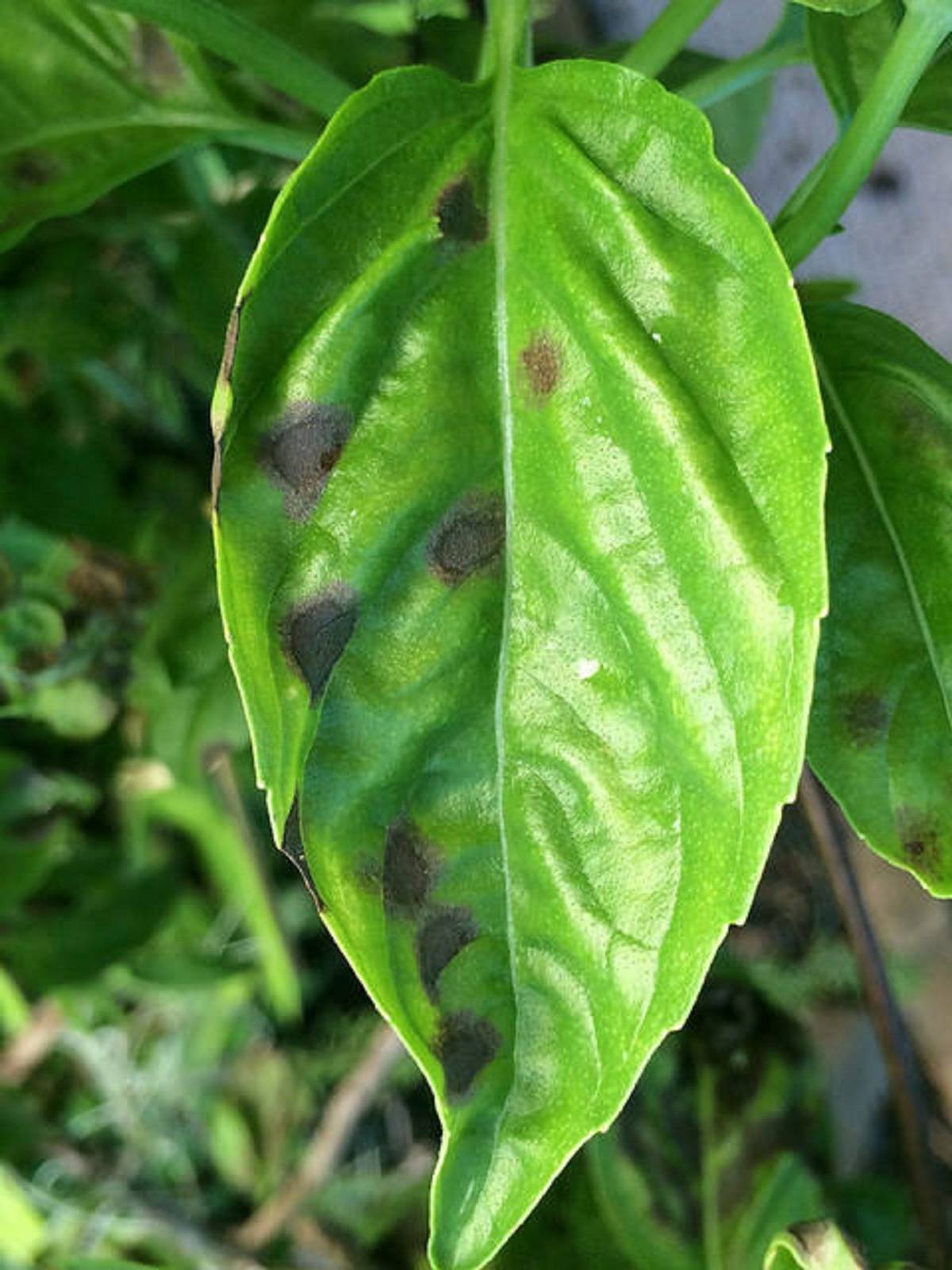
Major Pests and Diseases of Basil
Cercospora leaf spot (Cercospora ocimicola)
On leaves, there are round to irregular dark dots with bright centers.
Avoid overhead irrigation and water splashing on plants; instead, irrigate them from the ground up and mulch the area around them to lessen water splash; all problematic leaves should be removed and destroyed. Spraying a fungicide containing potassium bicarbonate on a weekly basis helps control mild infections.

Basil Shoot Blight or Bacterial Leaf Spot
Pseudomonas cichorii is a kind of bacterium that causes this basil disease. Black or brown spots that form on the leaves and streaks on the plant stems are signs of bacterial leaf spots.
When basil plant leaves are splattered with contaminated soil, bacterial leaf spot develops. Although there is no cure for bacterial leaf spots, the damage can be reduced by giving your basil plants plenty of air circulation and watering them in a way that prevents the bacteria from splashing onto the leaves.
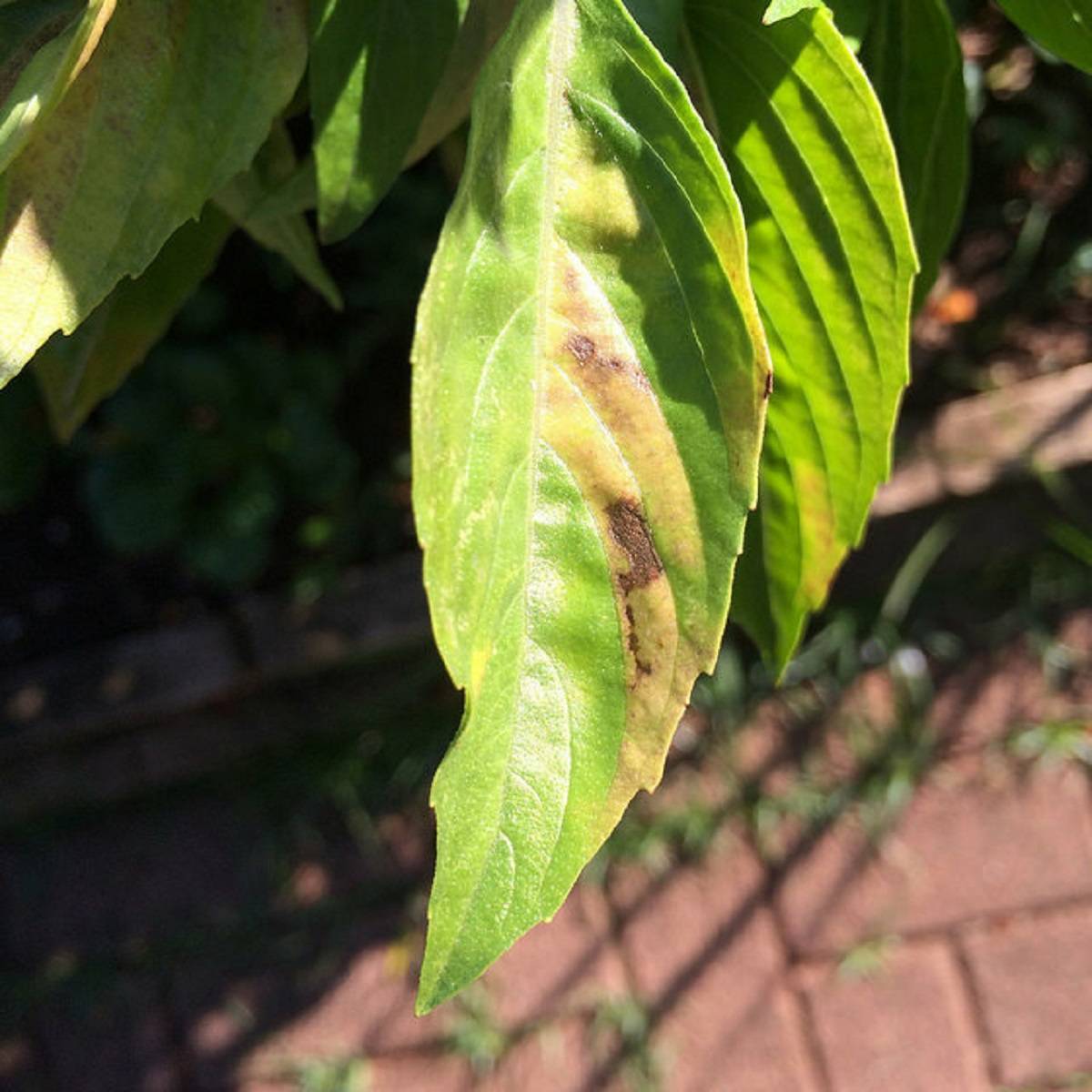
Downy Mildew (Peronospora belbahrii)
The basil disease downy mildew just recently began to harm basil plants in recent years. Yellow leaves with fuzzy, greyish growth on the undersides are one of the signs of downy mildew. When downy mildew emerges on your basil plants, limit overhead watering and make sure the plants have sufficient drainage and air circulation since too damp circumstances promote it worse.
Grow tolerant types, use preventive fungicides, and ensure that plants grown in greenhouses have proper air circulation can help you in tackling diseases.
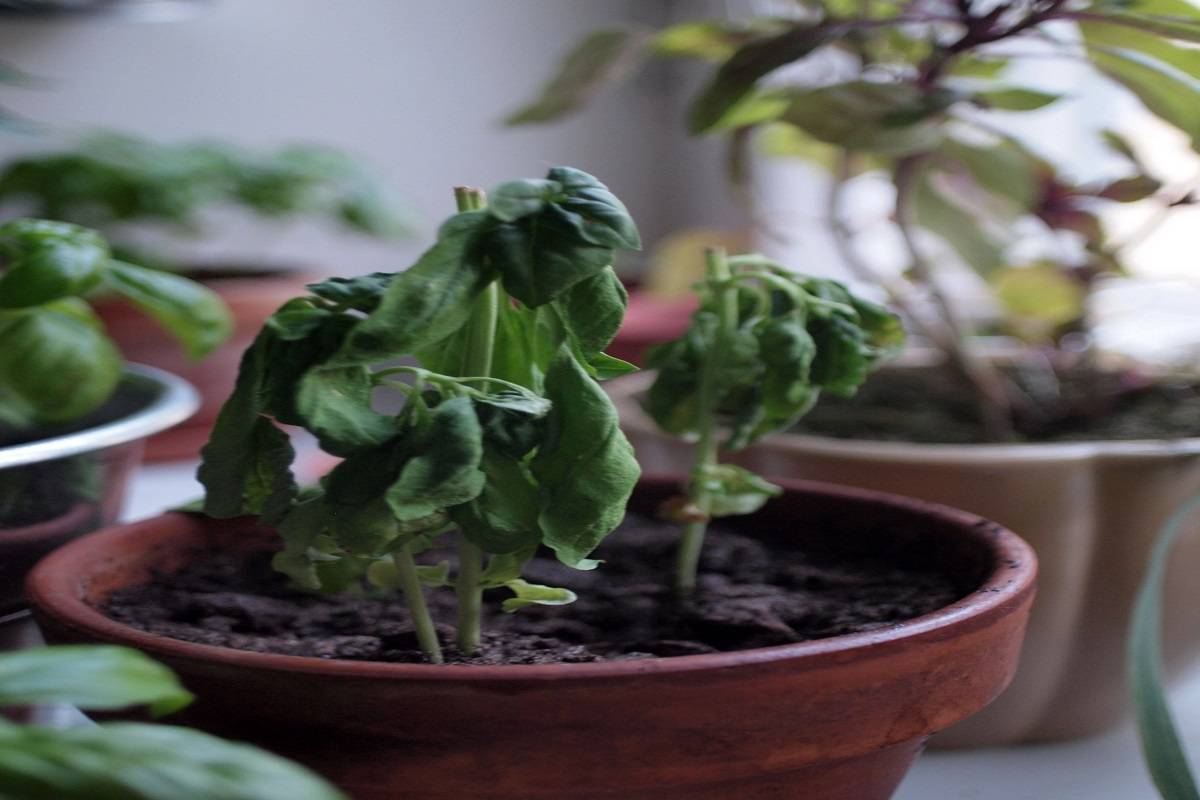
Fusarium Wilt
Fusarium wilt is one of the most frequent basil diseases. Although sweet basil cultivars are more frequently affected, other basil kinds are nonetheless fairly susceptible.
Fusarium wilt symptoms include:
-
stunted growth
-
yellowing and withered leaves
-
dark streaks or blotches on the stem
-
severely bent stems
-
leaf drop
The fungus that causes fusarium wilt can spread either through the soil that the afflicted basil plants were growing in or through the seeds of those plants.
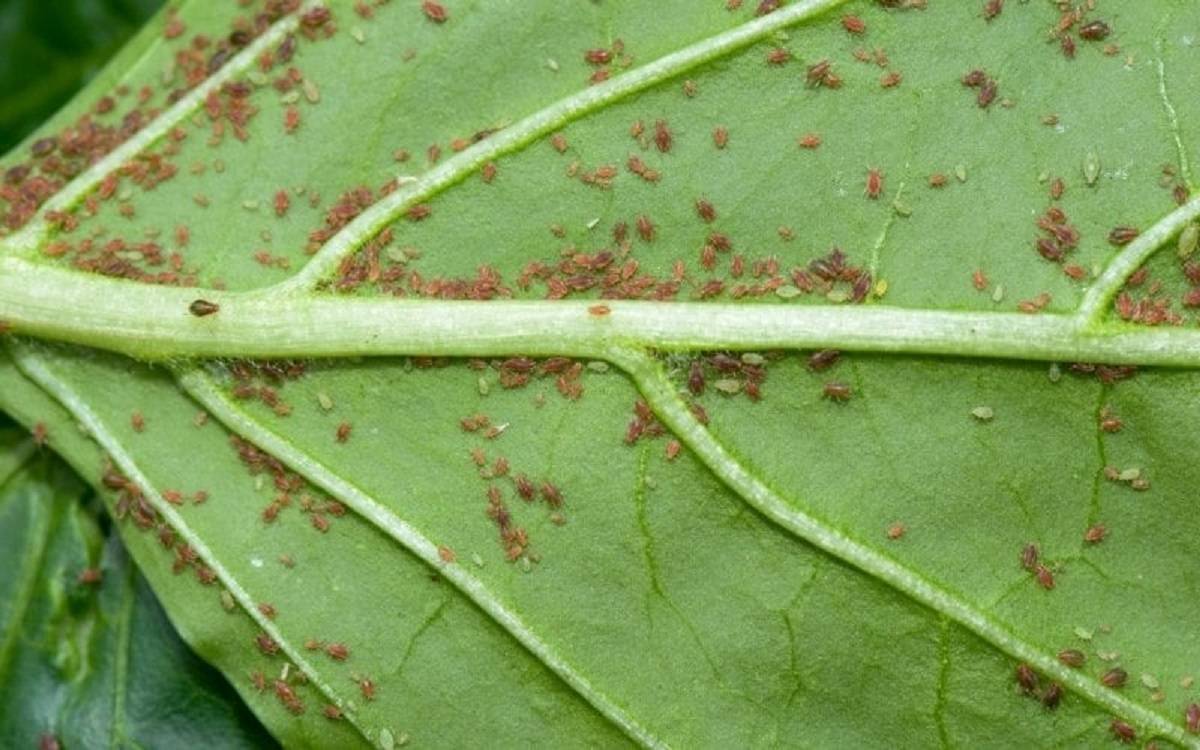
Aphids
Aphids are among the most prevalent pests of basil. These tiny, soft-bodied insects cling to the basil plant's stems and leaves below the surface, sucking off the sap. They cover the plant with a gooey fluid called honeydew, which draws ants and sooty mould, both of which will further harm the plant.
Small aphid infestations are not a huge concern; simply use powerful water jets to blast the critters off your basil plants. Reflective mulches are another option you have for keeping aphids away from your plants. Insecticides should only be used in cases of severe infestations. Neem oil and insecticidal soaps are additional efficient aphid control measures.
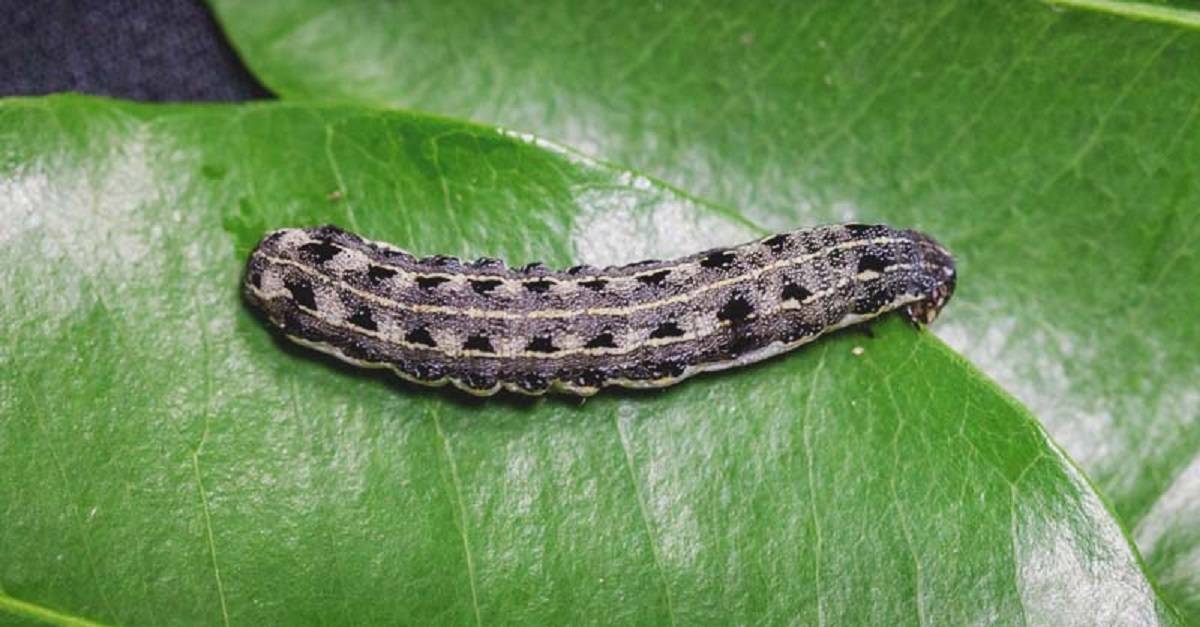
Cutworms
The larval stage of several species of beetles is known as cutworms. They are particularly harmful to young seedlings and plants and dwell in the soil. They quickly eat through the stems at night, frequently cutting plants off at the soil level.
Making a collar out of aluminum foil or cardboard and wrapping it around the base of your basil plants will help stop them by shielding the stem from cutworms. Leave the collar at least three inches above the ground and insert it one inch into the soil.
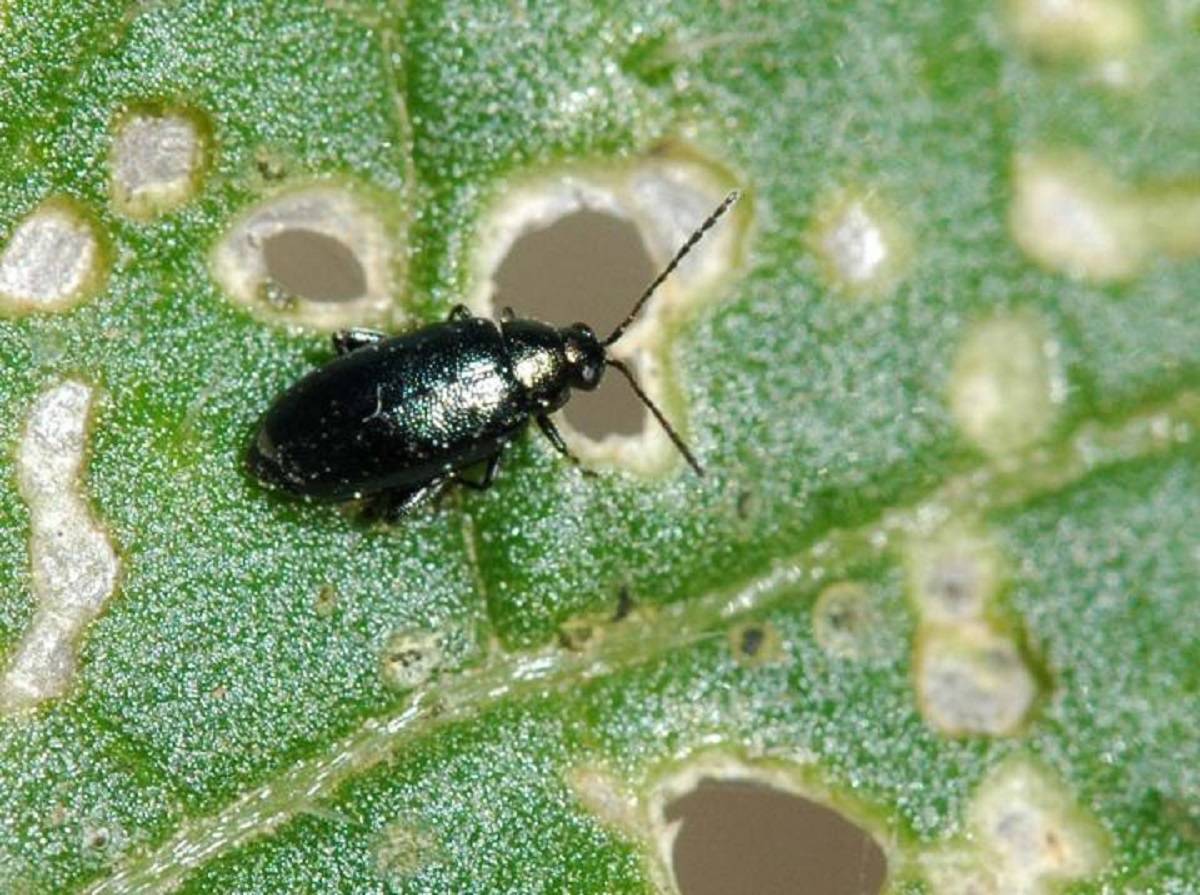
Flea Beetles
Flea beetles are one of the most aggravating basil pests because they attack young plants and seedlings. Plant development is slowed by an infestation, and in extreme cases, plants can even perish.
The tiny flea beetles move from one plant to another like fleas. Cover your plants with floating row covers to stop the beetles since older plants can survive infestations but young ones cannot. Neem oil and diatomaceous earth are other useful pest-control tools.












